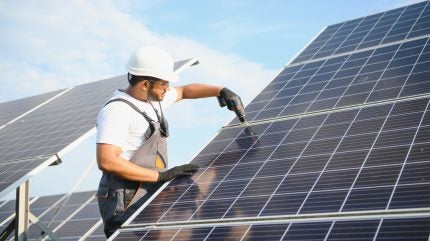
India’s Ministry of New & Renewable Energy (MNRE) has extended the deadline for certain solar power projects by nine months, giving developers until December 2025 to complete commissioning, reported Reuters, citing sources.
The extension applies to Solar Energy Corporation of India (SECI) and the Indian Renewable Energy Development Agency (IREDA) projects.
It has been granted in response to various challenges including the limited availability of domestically produced photovoltaic (PV) solar modules, transmission infrastructure issues and delays in the tendering process.
The SECI and IREDA had sought the extension for projects under the Central Public Sector Undertaking (CPSU) Scheme Phase-II.
This scheme is designed to establish 12GW of solar projects by state-run entities using domestically manufactured solar PV cells and modules, with financial backing from the Indian Government, the report said.
The extension is indicative of the hurdles India’s renewable energy sector is facing as it works towards its ambitious target of achieving at least 500GW of non-fossil power capacity by 2030.
Currently, the country has 172GW of non-fossil power capacity.
Challenges such as weak demand for tenders, land acquisition issues, delays in power purchase agreements and project cancellations continue to plague the sector.
Despite these obstacles, India’s commitment to expanding its renewable energy capacity remains, as fossil fuels still accounted for more than two-thirds of the total power generated last year.
India also did not meet its previous target of adding 175GW of renewable energy capacity by 2022.
According to a report by the Institute for Energy Economics and Financial Analysis, these execution challenges could potentially affect India’s goal for 2030.
In a record-breaking move in 2024, India issued 73GW of utility-scale renewable energy tenders, exceeding the MNRE’s annual bidding plan of 50GW.
Wind-solar hybrid projects emerged as the leading segment in utility-scale renewable energy tendering during the year, outpacing solar power.
However, there was an undersubscription of 8.5GW, a figure five-times higher than the previous year.


